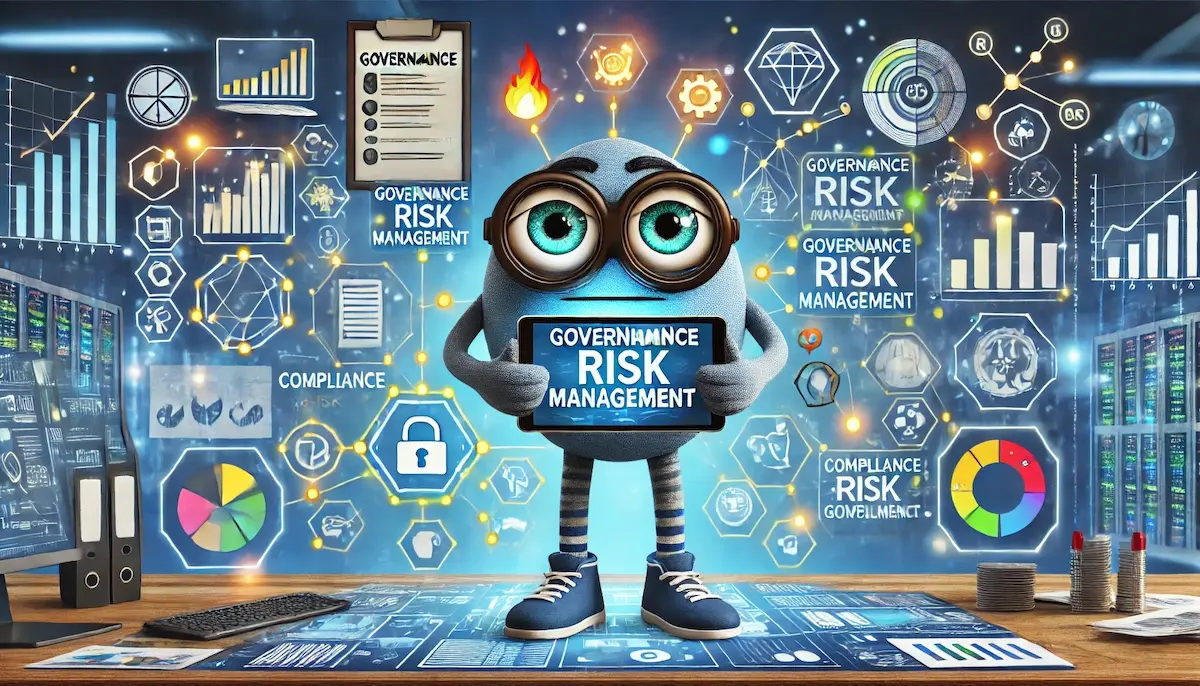Governance risk management (GRM) involves identifying, assessing, and mitigating risks that arise from inadequate or failed corporate governance structures and processes. Effective GRM ensures that an organization’s governance framework supports its strategic objectives, complies with regulatory requirements, and fosters trust among stakeholders. Let’s explore the key components and benefits of governance risk management.
The Role of Governance Risk Management
The primary goal of governance risk management is to safeguard the integrity and effectiveness of an organization’s governance practices. This involves managing risks related to board oversight, decision-making processes, regulatory compliance, ethical conduct, and stakeholder engagement. By addressing these risks, organizations can enhance their governance practices and achieve sustainable success.
Key Components of Governance Risk Management
Several key components contribute to successful governance risk management:
1. Risk Identification
Identifying potential governance risks is the first step in the GRM process. This includes recognizing risks related to board composition, executive leadership, decision-making processes, regulatory compliance, and conflicts of interest. Governance audits, stakeholder consultations, and risk assessments can help identify these risks.
2. Risk Assessment
Once risks are identified, they must be assessed to determine their potential impact and likelihood. This involves evaluating the severity of each risk and its potential consequences on the organization’s governance framework and strategic objectives. Tools such as risk matrices, scenario analysis, and governance scorecards can be used for this purpose.
3. Risk Mitigation
Risk mitigation involves developing strategies to reduce or manage the identified governance risks. This can include strengthening board oversight, enhancing internal controls, improving decision-making processes, and ensuring compliance with regulations. Effective mitigation strategies help minimize the impact of governance failures and enhance organizational resilience.
4. Risk Monitoring
Continuous monitoring of governance risks is essential for ensuring that risk management strategies remain effective. This involves regularly reviewing risk exposures, assessing the effectiveness of mitigation measures, and making adjustments as needed. Real-time monitoring tools and key risk indicators (KRIs) can aid in this process.
5. Compliance Management
Ensuring compliance with corporate governance regulations and standards is a critical aspect of GRM. This involves staying informed about regulatory changes, implementing necessary controls, and maintaining accurate records. Compliance reduces the risk of legal penalties and reputational damage.
6. Reporting and Communication
Clear and timely reporting of governance risk information to stakeholders is crucial for transparency and accountability. This includes providing regular updates on risk exposures, mitigation efforts, and any changes in the governance risk landscape. Transparent communication builds trust and supports strategic planning.
7. Governance Framework
Establishing a robust governance framework involves defining the roles and responsibilities of the board of directors, executive management, and governance committees. This framework ensures accountability, oversight, and effective decision-making within the organization.
Benefits of Governance Risk Management
Implementing effective governance risk management practices offers numerous advantages for organizations:
1. Enhanced Governance Practices
By identifying and mitigating governance risks, organizations can strengthen their governance framework. This leads to improved decision-making, greater accountability, and more effective oversight.
2. Improved Compliance
Ensuring compliance with governance regulations and standards reduces the risk of legal penalties and reputational damage. This fosters trust with regulators, investors, and other stakeholders.
3. Increased Transparency
Strong governance risk management practices promote transparency in organizational processes. Transparent reporting and communication build confidence among stakeholders and enhance the organization’s reputation.
4. Better Decision-Making
Effective governance practices support informed and strategic decision-making. By addressing governance risks, organizations can make better decisions that align with their long-term objectives.
5. Risk Reduction
Proactively managing governance risks minimizes the likelihood and impact of governance failures. This helps protect the organization’s integrity, financial stability, and stakeholder trust.
6. Strategic Advantage
Organizations that effectively manage governance risks can gain a strategic advantage over competitors. Strong governance practices enhance the organization’s credibility and attractiveness to investors and partners.
7. Sustainable Growth
Integrating governance risk management with strategic planning ensures that organizations consider the long-term implications of their governance practices. This supports sustainable growth and helps achieve long-term business success.
Conclusion
Governance risk management is essential for protecting an organization’s governance framework, ensuring compliance, and fostering trust among stakeholders. By implementing robust GRM practices, businesses can enhance governance practices, improve compliance, and achieve sustainable success. As governance expectations continue to evolve, effective governance risk management will remain crucial for navigating uncertainties and ensuring long-term viability.
Blockfine thanks you for reading and hopes you found this article helpful.
